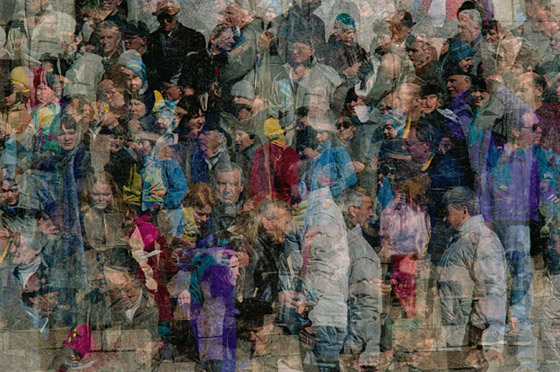I know there is a multitude of people for whom New Art is like a bone stuck in the throat.
They just don't really know how to get rid of it.
Alfonsas Andriuškevičius, 1997
The birth of the independence movement Sąjūdis in Lithuania was accompanied by the arrival of New Art, as an alternative and opposition to traditional art forms. This art is sometimes referred to as postmodern (because of its opposition to the cult of modernist art), and more often as interdisciplinary (since it refused to adhere to the disciplines of the craft, combined different codes of expression, and brought creative art closer to science and politics), contemporary (in that it best corresponded to the social and cultural realities of the period), or conceptual (where a work's idea is ostensibly always more important than the material object).
The New Art primarily avoided the customary representation of traditional art, because to represent through painting, graphic art or sculpture was to describe a real or imagined object, as if presenting it in a condensed form that will always be related to a certain visual rhetoric that, in turn, is related to a certain ideology. The new artists fought against representation in two principal ways: through ridicule – appropriating, ruining or remaking the paintings created by others, or by relying upon reality and life itself.
The New Art conferred meaning upon authentic but inexpressive fragments of the physical and routine world – found objects, products, organic material, attributes of things and bodies, living things and even other people – through words or (non)creative processes founded upon research, collaboration and interaction. In time, physical reality was replaced by its digital image.




Comments
Write a comment